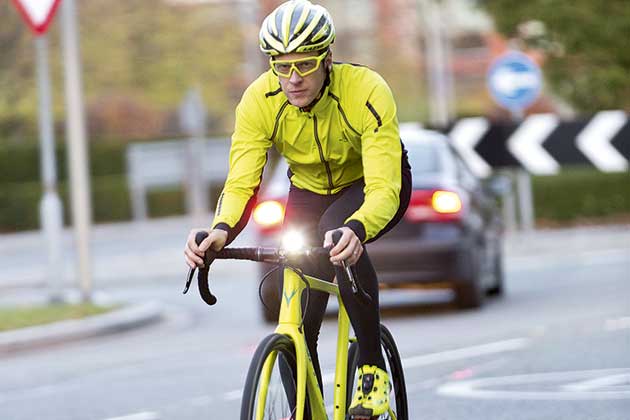What is the evidence that wearing hi-vis clothing makes you a safer cyclist?
Roads minister suggests making bright kit mandatory for cyclists in Britain - but what's the evidence to back up the claim that this could help increase safety?

For several seasons now hi-vis has been fashionable for bike wear. But last month roads minister Jesse Norman suggested that the government’s wide-ranging review of cycle safety would consider if cyclists should be compelled to wear high-visibility clothing if there was evidence for it.
What evidence is there that supports wearing hi-vis clothing?
There’s not a huge body of evidence but there was a Danish randomised trial involving 6,793 cyclists, published in scientific journal Safety Science in August this year.
It found a 47 per cent reduction in incidents involving other road users where the cyclist was injured when cyclists were wearing a hi-vis jacket with reflective strips.
So, hi-vis does work then?
It’s not quite that simple. The limitation of hi-vis clothing is that fluorescent colours work by converting UV light in sunlight to something we can see so they’re bright in daylight, but street lights and headlights don’t give off much UV light, so it makes little difference in darker conditions.
A 2006 review by health network Cochrane of 42 studies found that drivers were more likely to see pedestrians and cyclists in fluorescent clothing during the day.
The latest race content, interviews, features, reviews and expert buying guides, direct to your inbox!
It also said that the use of lights or reflective clothing improves cyclists being seen at night.
>>> Government review considers forcing cyclists to wear hi-vis and helmets
More recently, in 2010, a study in the Journal of the Australasian College of Road Safety detailed a series of controlled experiments with cyclists in different clothing to see which was most recognisable to drivers at night.
It found only two per cent of drivers recognised cyclists in black clothing; this rose to 15 per cent for those in a hi-vis vest but reached 90 per cent for cyclists in a reflective vest and ankle and knee reflectors — the movement of the cyclists’ legs aids being seen.
However, Cherry Allan, campaigns and policy coordinator at British organisation Cycling UK, points out: “The research suggests that it may help drivers to spot pedestrians and cyclists more readily, but there was no evidence by how much and it was impossible to say whether that made them safer, as spotting them was one thing and driving safely around them another.”
What else can be done?
A 2013 Danish study in Accident Analysis & Prevention found cyclists who use flashing daytime lights had 47 per cent fewer collisions with other road users, so running them seems a good idea.
It is also perhaps instructive to heed the results of a 2017 study in the same journal that found drivers who are cyclists tend to be better at spotting cyclists, so perhaps training is the answer.
>>> Best cycling jackets for winter 2017
Dr Graham Hole, senior lecturer in psychology at the University of Sussex, says: “Those who advocate hi-vis clothing think of it in terms of cyclists being small and therefore hard to see but the real problem is when someone pulls out in front of a cyclist.
“Under those sort of conditions cyclists are very large on the retina of the person who is pulling out. It’s not that the person is hard to see in terms of physical characteristics, it’s that people aren’t expecting to see them.”
This article originally appeared in the November 2 2017 issue of Cycling Weekly magazine
Having trained as a journalist at Cardiff University I spent eight years working as a business journalist covering everything from social care, to construction to the legal profession and riding my bike at the weekends and evenings. When a friend told me Cycling Weekly was looking for a news editor, I didn't give myself much chance of landing the role, but I did and joined the publication in 2016. Since then I've covered Tours de France, World Championships, hour records, spring classics and races in the Middle East. On top of that, since becoming features editor in 2017 I've also been lucky enough to get myself sent to ride my bike for magazine pieces in Portugal and across the UK. They've all been fun but I have an enduring passion for covering the national track championships. It might not be the most glamorous but it's got a real community feeling to it.